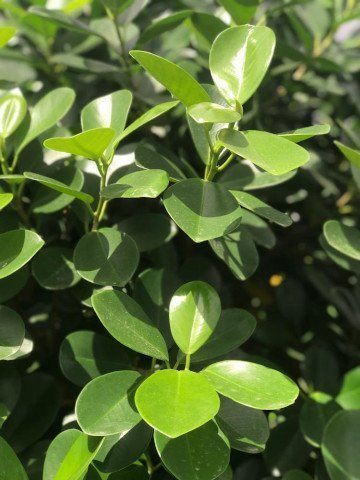
Emerald green tropical foliage in abundance make the Ficus Moclame a must try houseplant. This fig plant maintains a compact spherical shape and handles interiorscape conditions better than some other types of Ficus. Farm Life grows the Moclame as a standard in 14, 17 and 21 inch pots. Heights are from 5.5 - 9.5 feet tall.
The meters below indicate a range of light and tolerance to drought. The ranges are indicated by the little light bulbs and the small water drops.
Light Instructions

Water Instructions


From the Grower
Mites should be primarily controlled with predator mites. Neoseiulus californicus,(Spical, Spical Plus, Californiline) and Phytoseiulus persimilis,(Spidex, Bio Persimilis, Phytoline) are two excellent choices for spider mite control. If a mite infestation is exceptionally bad, prior to the release of predator mites, spray the plant with water or horticultural oil. Both will provide some knockdown control of spider mites and will not leave a toxic residue that may effect predator mites. If the population of spider mites is red in color, (as opposed to pale yellow with 2 dark black spots) then californicus mites are the only option. Even these predators do not feed heavily on the red spider mite. In this case spraying is the best option. Use a miticide that works well with californicus predator mites (Sultan, Floramite SC, Shuttle O).
Mealybugs can be removed with a systemic insecticide drench and hand cleaning. If pesticides are not an option, try horticultural oil directly sprayed onto the insects. A second and third treatment, if using oils, will be necessary. Space out the sprays at 3 week intervals to break up the mealybug life cycle. Mealybugs have not been a major pest in the nursery, but they have been observed.
Aphids can be controlled in the same way as mealybugs.
The Moclame develops a dense canopy of leaves in the nursery, some of which will be shed when transferring this plant to lower light levels. Overall the Moclame should have less initial leaf loss than a Ficus benjamina. Once the initial acclimation is complete, leaf loss will be more related to water stress or insect damage than light.
Other Links
Ficus maclellandii 'Amstel King'
Ficus microcarpa 'Moclame'
Ficus Triangularis
